-
Fast Forgetting
Take your mind back to the opening scenes of 2003’s Lost in Translation. Bob waking up to blurry lights, people, roads and vehicles of the Tokyo two decades past.
Imagine viewing that scene, from its protagonist’s shielded, cozy perspective, in a theater. The fleeting background of faded neon, rectangular cars, and formal wear in motion as perceived by an outsider just waking up. An introduction to an alien setting. Well, alien to some.
Imagine its impression on someone who has never left a rural East African village. Or say, its familiarity to a person in geographically and culturally adjacent Seoul. To individuals separated by time, place, culture and contexts. People out of phase with one another. To say nothing of any understanding they carry, or lack thereof, of the urban agglomeration presented on fast-forward.
I sometimes reflect on how far apart places feel, not only in distance but in time. Each location with its own developmental clock, ticking at a different pace than everywhere else. On paths varied, non-linear and branching, each scripting a unique history.
And what of objects that adorn these land- and time-scapes? Placeholders or conveyors of atavistic memory stained across eras. Items associated with more than just feeling, carrying the scars of their functions, age and owners—of the tendrils of time surrounding them. No wonder there is such great emotion elicited when visiting different sites, especially those we have occupied regularly, either physically or in dreams. Stepping through doorways to recalibrate our recollections.
At least that is what comes to mind when viewing films like Yumeng He’s The Other Side of the Mountain. Contemplative and intentional, a moving portrait to a personal history experienced secondhand. Yumeng follows her father, Cheng, as he makes a journey on behalf of his mother to her childhood home. A pilgrimage she cannot make herself. Cheng speaks with his mother’s friends, connects with locals, sightsees, sketches, and supports Yumeng in the construction of an ode to a different time. One hidden away not unintentionally:
-
The Nechako in Summer
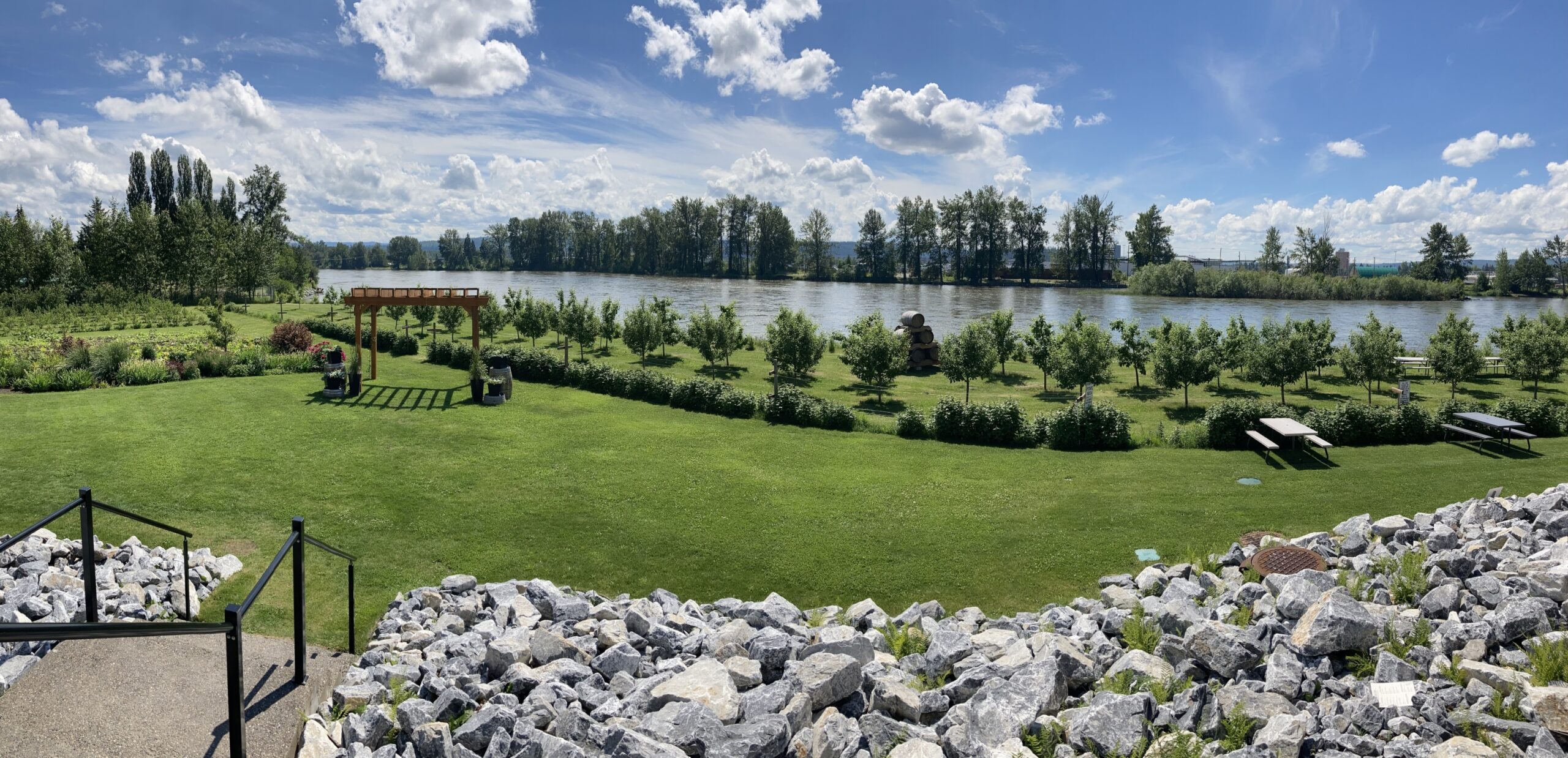 Banks of the Nechako (“Big River”) as seen from Northern Lights Estate Winery, Prince George. 07/22
Banks of the Nechako (“Big River”) as seen from Northern Lights Estate Winery, Prince George. 07/22 -
Blurred Life
“This planet definitely wants to kill us. I am sympathetic, but not supportive.”
– Jackie Kashian in her special, Stay-KashianThe South Africa and India Test series has just kicked off in Kolkata, and boy is it hazy. I am guessing they have not yet developed AI tools to clean up the frames of live sport in real time, to sharpen the blurred edges that even high-definition cameras cannot smooth (and to trick us further into rejecting our everyday reality). Aside from the dulled color of life itself, the ever-present smog is a blunt reminder of our disregard for the seriousness of ongoing climate catastrophe.
If you have never been to India, you may not know how unbelievably polluted its urban areas are. The majority of pictures that I have from my visits there, just like any remaining memories of my childhood, seem as though they have been put through an unflattering filter. Much of the nation is permanently caked in unsafe levels of particulate matter, ensuring that nearly half a billion people living across its metropolises predispose themselves to debilitating health conditions.
Vehicle emissions, industrial pollution, dust from desertified and arid landscapes, crop burning and traditional fuel use (burning of wood, coal and dung) in rural communities all lead to air that is unbreathable. Unacceptable yet accepted. Moreover, exacerbated by the priorities of those with money and power.
The World Health Organization’s “safe limit” of PM2.5 levels is 15 µg/m³ (micrograms per cubic meter). Here is how the organization describes PM2.5 impacts:
“Fine particulate matter (PM2.5) can penetrate through the lungs and further enter the body through the blood stream, affecting all major organs.
Exposure to PM2.5 can cause diseases both to our cardiovascular and respiratory system, provoking, for example stroke, lung cancer and chronic obstructive pulmonary disease (COPD).
New research has also shown an association between prenatal exposure to high levels of air pollution and developmental delay at age three, as well as psychological and behavioural problems later on, including symptoms of attention deficit hyperactivity disorder (ADHD), anxiety and depression.”
In addition to the above, we know how smog contributes to cognitive difficulties and decline, whether exposure is limited or persistent. The largest Indian cities are regularly at 100 µg/m³ or above for most of the year. The government even has its own ways of distorting the severity of the problem through national regulations that avoid reporting pollution readings above arbitrarily introduced caps.
This air—my past—is our future. No one on this globe can escape the propagation of haze. Smoke hardly respects national borders. And no matter how fluid, adaptive or dynamic our atmospheric habitat is, it cannot escape universal constraints. The more carbon compounds we dig up from our planet’s crust and the more greenhouse gases we expand into our shared, limited air, the shorter our runway is as a viable species.
-
Fall Colors at River Ness
 Fluid outlines and saturated life in Inverness. 31/10/2015
Fluid outlines and saturated life in Inverness. 31/10/2015 -
Commutements
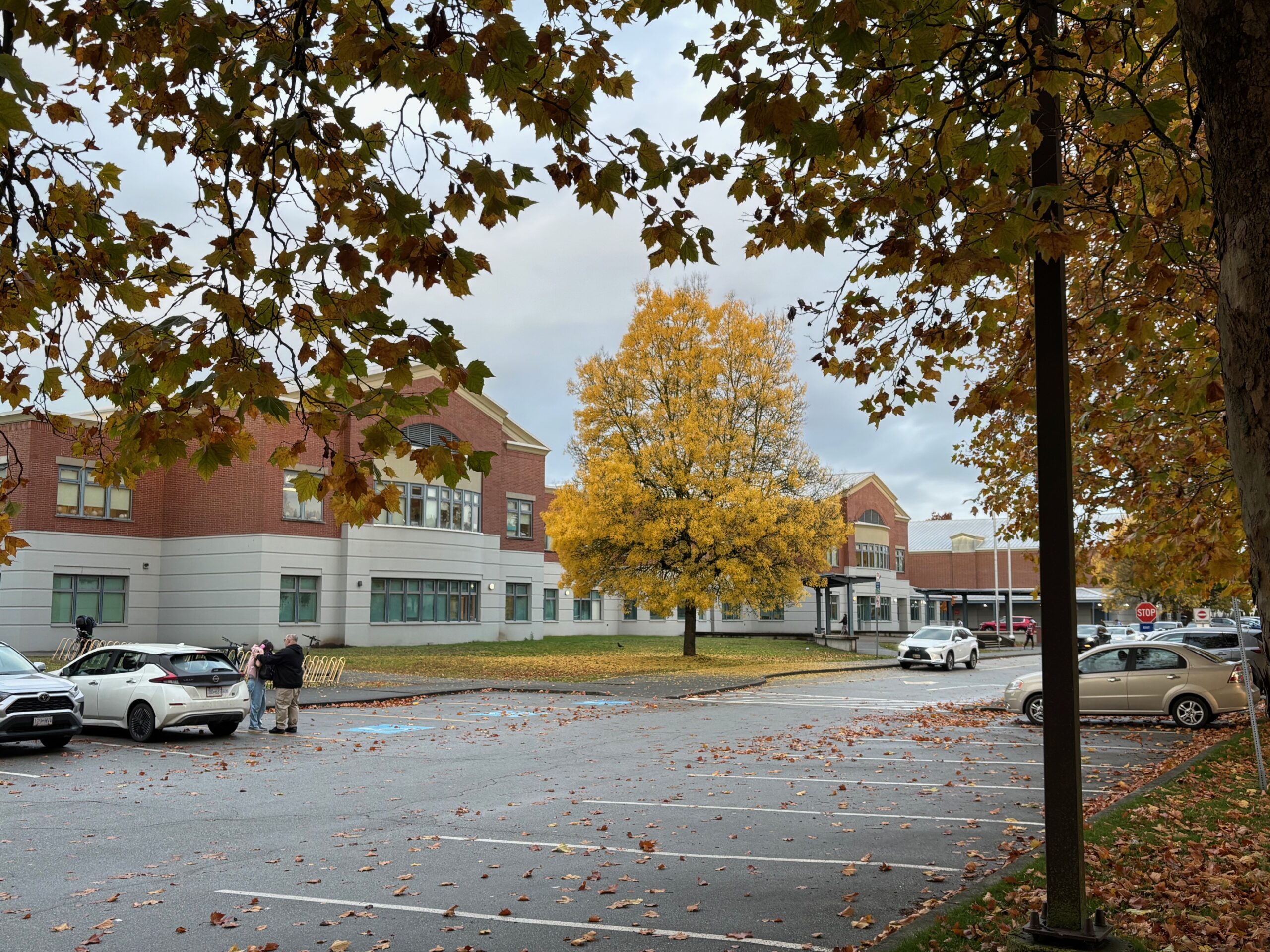 On the way to the 410 stop in Richmond, B.C.
On the way to the 410 stop in Richmond, B.C.A bevy of caffeine-fueled commuters await on the Canada Line SkyTrain at 8am on a weekday.
A construction worker wearing a Rolex, shooting the shit in Spanish with his laborer buddy. Some suits huddled in the corner with their sleek briefcases and Bluetooth earbuds blinking blue, a pulse signaling ambition. A parent herding their small family—a child clinging to an arm and another in a stroller. The pram parked beside their seat because a couple of cyclists in full gear have already claimed the designated corner. Students of all ages with their stickered backpacks and tucked textbooks, entering and exiting at each stop like a thermodynamic system seeking equilibrium. A lady draped in wealth carrying her pet poodle, perhaps plotting its escape, in a designer purse. And today, as is sometimes the case, there is even a domineering individual opining loudly about irreligiousness and hedonism in the world; claiming a state of social collapse and political turmoil ungraspable outside of the confines of their mind. Luckily, they are mostly talking to themselves. Masks abound, veneers both cosmetic and cultural.
Everyone who is not talking has their heads down, scrolling through the feeds on their phone. An ephemeral portrait of modern routines squeezed into a gliding carriage. Rounding out the vignette of transience defined by collective movement on wheels, framed by rectangles and lit by the crisp-white LED glow.
Artist: Random Coalescence. Canvas: Necessitated Vocation.
Dreary-eyed and carted around like cargo. Depending on your view, indicative of the zombification of societal behavior or a representation of our collective hustle.
-
Stubborn Arachnids
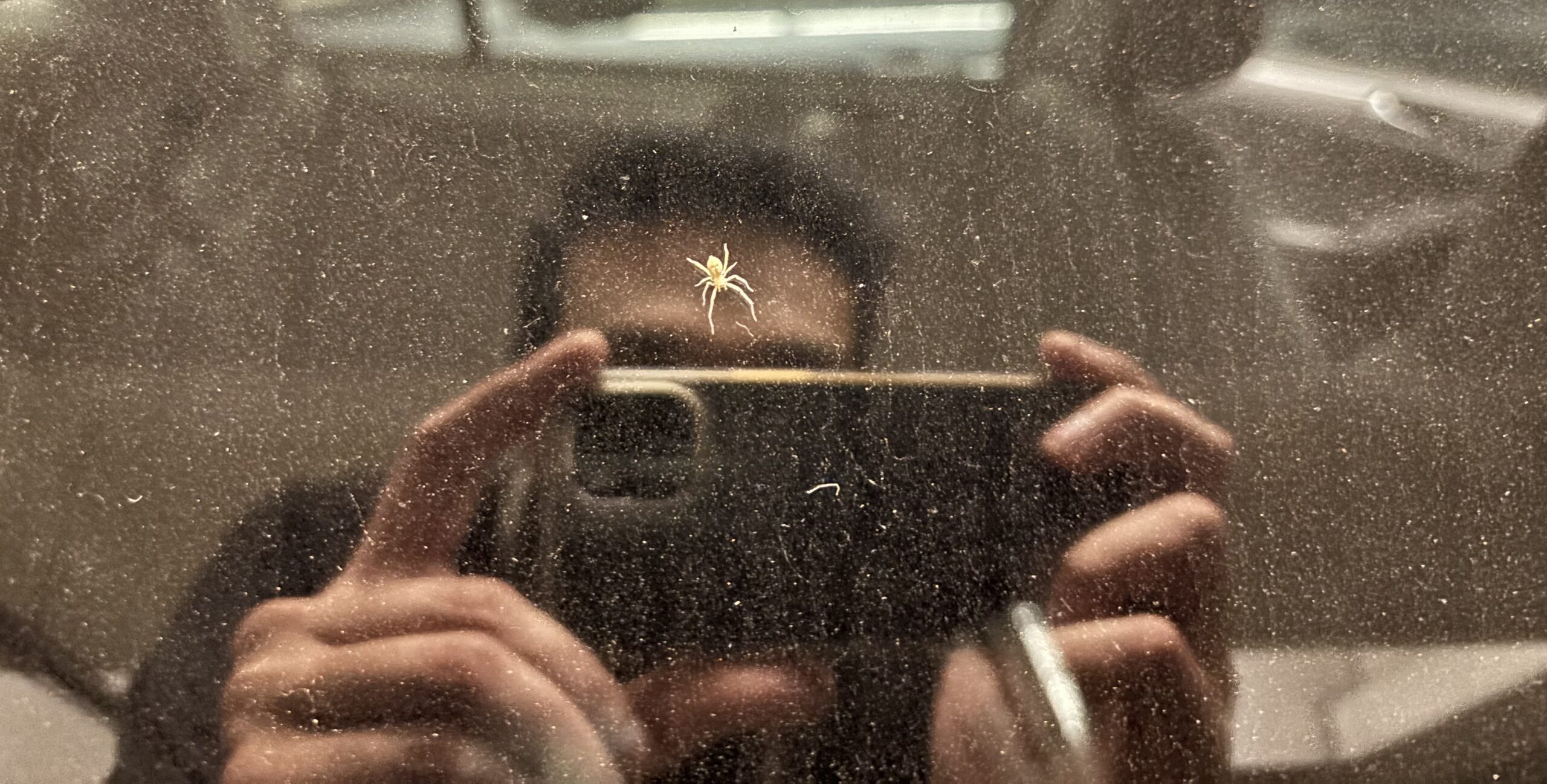 As you can tell, the travel keeps my vehicle super clean. 08/2025
As you can tell, the travel keeps my vehicle super clean. 08/2025Hitchhikers come in diverse shapes and sizes. This one remained on my rear window from one SkyTrain station to another. I guess we all sometimes prefer being chauffeured to taking transit.
Spiders are remarkably resilient, are they not?
I am going to cheat again on my one-a-week photo mission and share the shot below, of a web in my parents’ garden (taken perhaps a dozen years ago) that we had to remove in order to clean and repaint the fence. Once the work was done, the web was back up in a couple of days. Glistening in the same spot (when viewed at the right angles). The picture does not do its size justice – it was quite a ways from the fence, suspended six feet above the ground and ten feet between the shed and some small trees.
-
Autumnal Shades
Somewhere within the serene Britannia Conservation Area, Ottawa. Sunlit and Sunward. 12/10/2025
-
Night Life
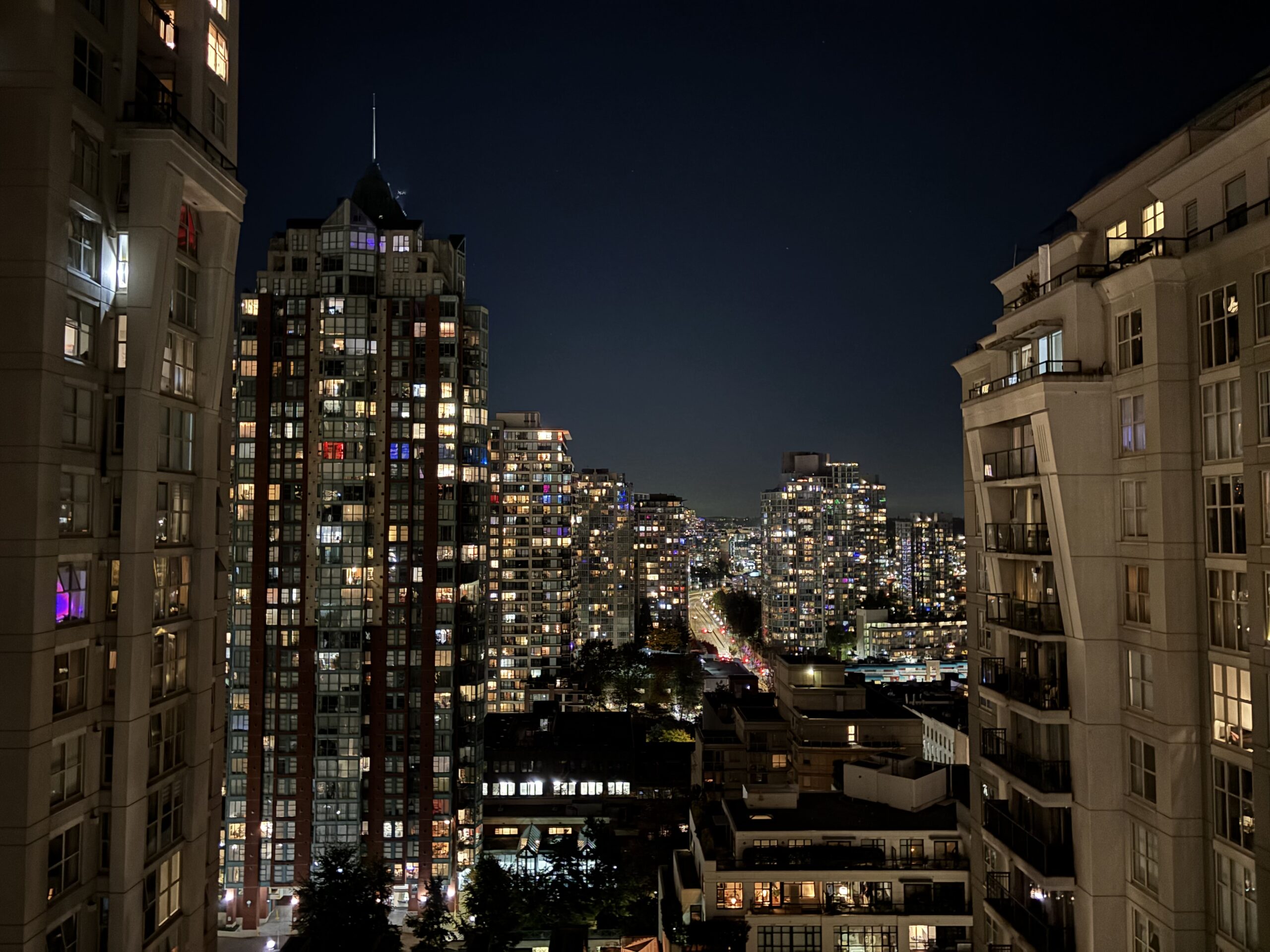 View from an apartment balcony, downtown Vancouver
View from an apartment balcony, downtown Vancouver -
East to West, Looking Down
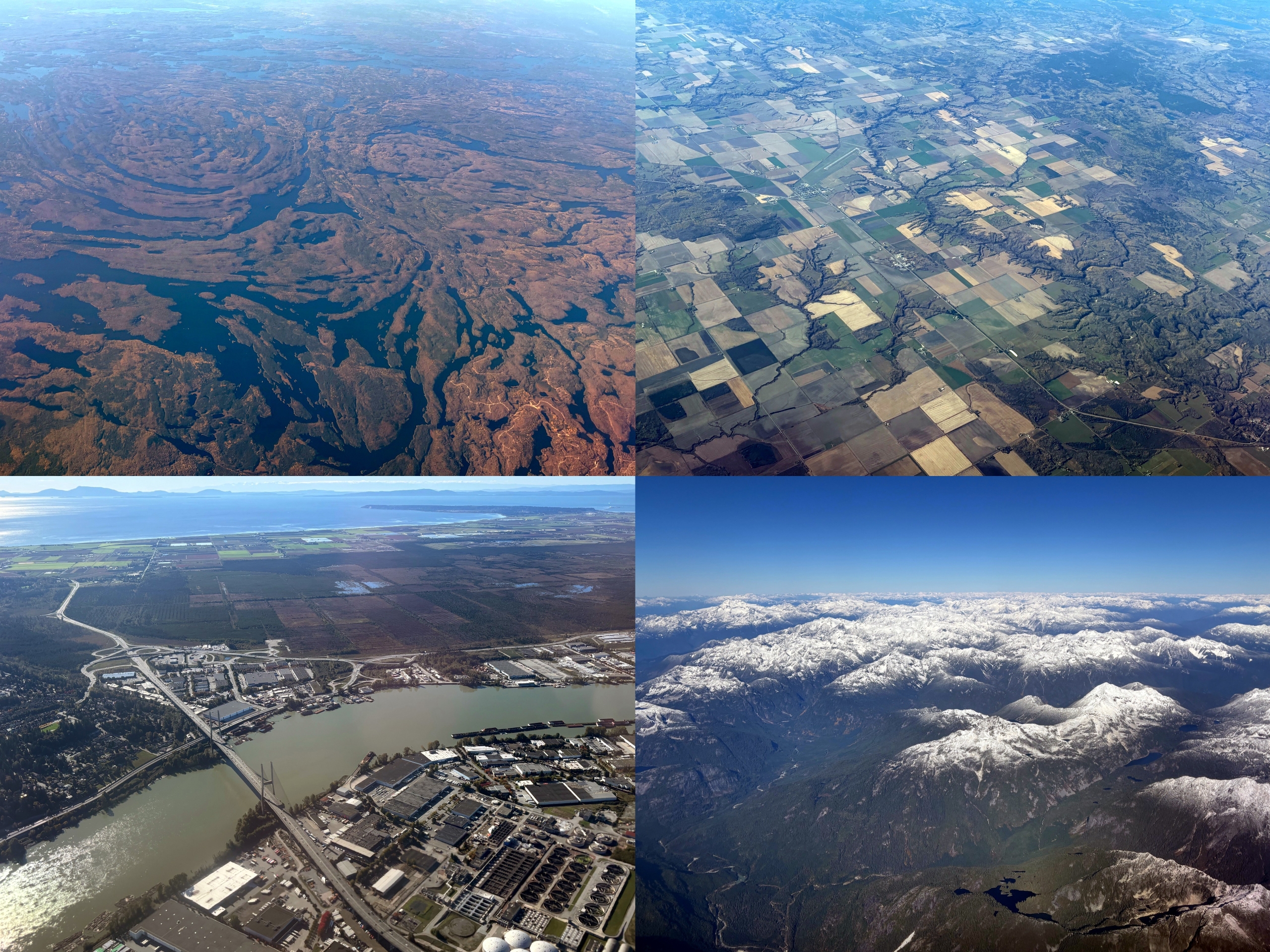
Canada, from the skies.
Funnily enough, there was no actual window at my window seat on the way to the nation’s capital. But on the way back, that small ticket promise was kept.
This week’s image(s): clicks from above, taken yesterday. When the clouds cleared and more importantly, when I was awake to take them. (I am not a morning person.)
Clockwise from the top left: the swirling earth of southern Ontario, the fractured fields of rural Saskatchewan, the white-tipped peaks of the Pacific Ranges, and the unusually uncrowded Alex Fraser Bridge.
-
Sunset on Parliament Hill
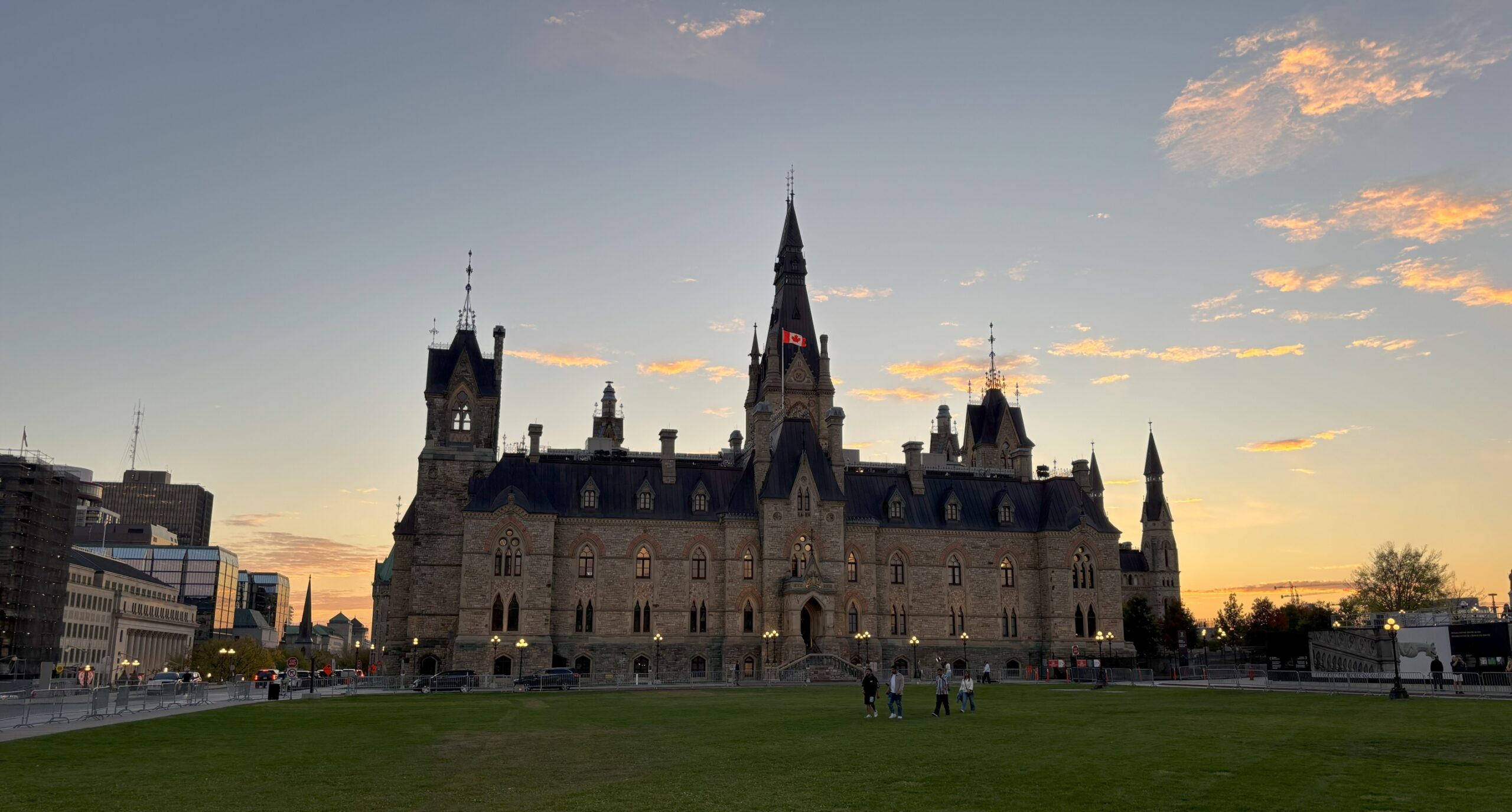 The lights are on…someone must be home. West Block, interim base of the House of Commons 06/10/25
The lights are on…someone must be home. West Block, interim base of the House of Commons 06/10/25I trundled about downtown Ottawa yesterday evening. Just had to take advantage of the warm temperatures before it cools off for the week. Somehow, it went up to 31 °C at one point—in October!
The gauge was still at 24 around 7pm as House proceedings adjourned (when this snap was taken). Sunset provides flattering lighting, no?